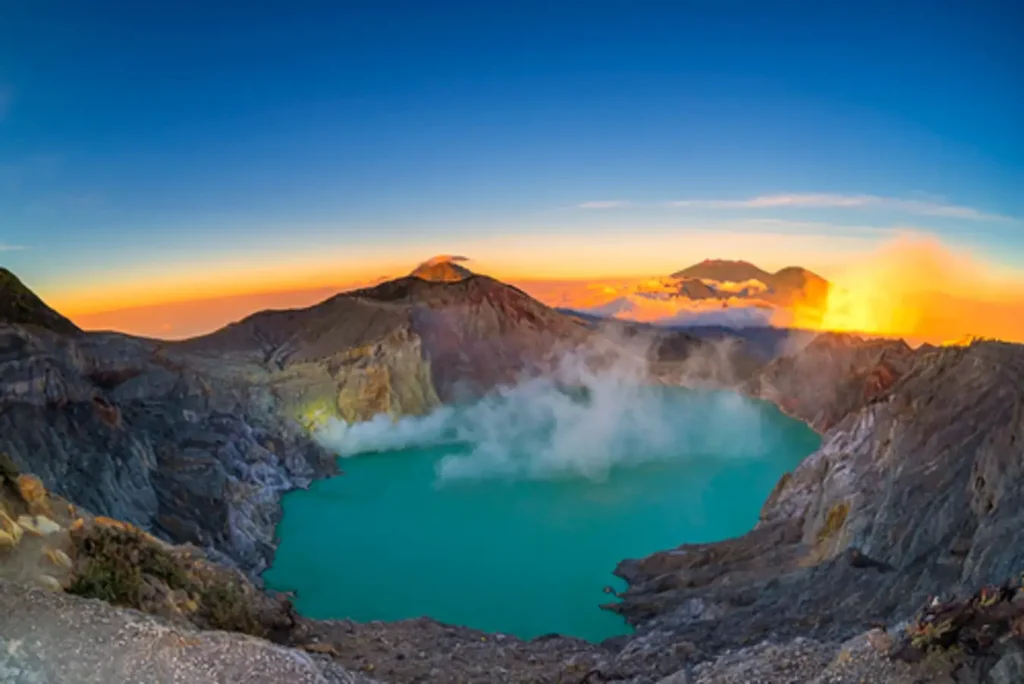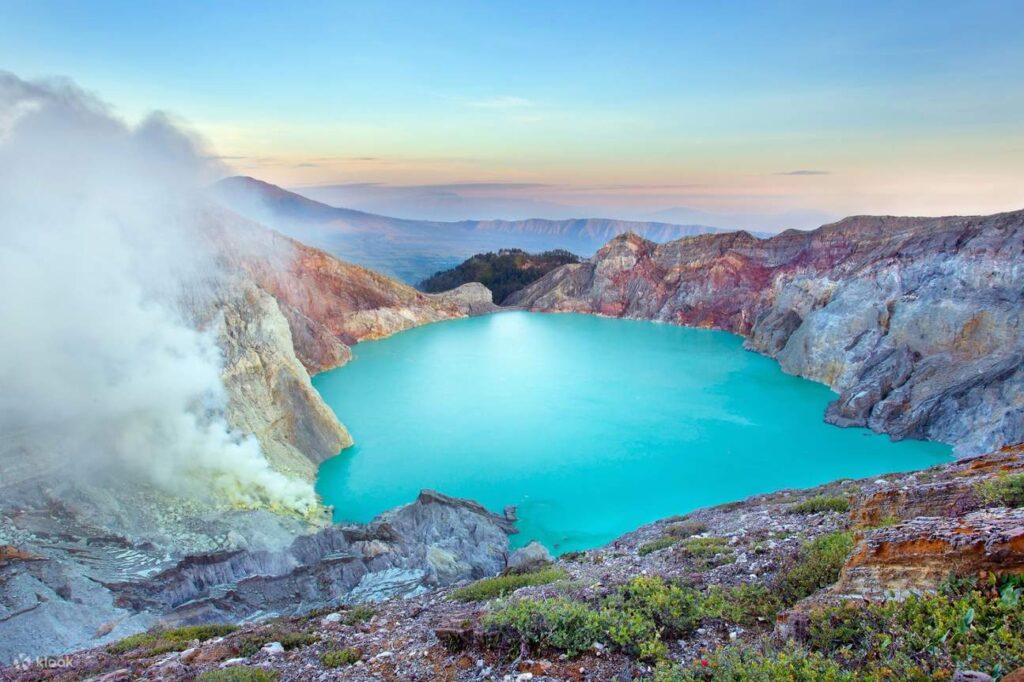Mount Bromo is a stunning destination for photographers looking to capture the beauty of the night sky. With its unique landscapes and clear skies, it’s an ideal location for astrophotography enthusiasts. In this guide, we will provide you with everything you need to know about capturing the Milky Way in Mount Bromo.
We will offer an overview of the destination and explain what makes it such a popular spot for photographing the night sky. We will also highlight the best locations for capturing stunning shots of the Milky Way and provide expert tips and techniques for successful astrophotography in Mount Bromo.
Key Takeaways
- Mount Bromo is a fantastic destination for capturing stunning shots of the Milky Way.
- There are several key locations in Mount Bromo that offer optimal conditions for astrophotography.
- Successful astrophotography in Mount Bromo requires the right equipment, technical knowledge, and expert techniques.
- By following the tips and guidelines in this guide, you can capture breathtaking photos of the night sky in Mount Bromo.
- Astrophotography tours in Mount Bromo can provide additional guidance and support for photographers looking to make the most of their experience.
Best Spots for Milky Way Photography in Mount Bromo
Capturing stunning Milky Way photos in Mount Bromo requires the right vantage points. To make the most of your astrophotography experience, we’ve compiled a list of the best spots to capture professional-grade shots of the night sky.
| Location | Optimal Time of Year | Weather Conditions | Recommended Camera Settings |
|---|---|---|---|
| Pananjakan Viewpoint | June to August | Clear skies | ISO 3200, f/2.8, 20-25 seconds exposure |
| Kingkong Hill | June to August | Clear skies | ISO 3200, f/2.8, 20-25 seconds exposure |
| Love Hill | June to August | Clear skies | ISO 3200, f/2.8, 20-25 seconds exposure |
| Bukit Cinta | June to August | Clear skies | ISO 3200, f/2.8, 20-25 seconds exposure |
One of the most popular Mount Bromo Milky Way photography spots is the Pananjakan Viewpoint. With its panoramic views of the Bromo Tengger Semeru National Park, it provides a unique setting for astrophotography. Other recommended spots include Kingkong Hill, Love Hill, and Bukit Cinta. Each location offers breathtaking views of the Milky Way, especially during the months of June to August when skies are clear.
When capturing Milky Way photos, it’s essential to have the right camera settings. We recommend using ISO 3200, a wide aperture of f/2.8, and a 20-25 seconds exposure. These settings will enable you to capture the full beauty and unique features of the Milky Way in Mount Bromo.
By visiting these spots and using the recommended camera settings, you can capture stunning Milky Way photos that rival those of professional astrophotographers. Start planning your visit, and prepare to be amazed at the magical wonders of Mount Bromo’s night sky!
Tips for Capturing the Milky Way in Mount Bromo.
If you’re planning to capture the elusive Milky Way in Mount Bromo, it’s essential to be well-equipped and prepared. Here are some tips to help you capture the night sky’s beauty in Mount Bromo:
1. Use a sturdy tripod
A tripod is essential for astrophotography, even more so when capturing the Milky Way. You’ll need a sturdy tripod to support your camera and lens for long exposures. A tripod will also prevent camera shake and ensure your images are sharp and in focus.
2. Use a wide-angle lens
A wide-angle lens is best for capturing the vast expanse of the Milky Way. It allows you to fit more of the night sky into your frame, resulting in stunning compositions. A lens with an aperture of f/2.8 or wider is ideal for capturing as much light as possible.
3. Shoot in RAW
Shooting in RAW allows you to capture more detail and gives you more flexibility in post-processing. With RAW files, you can adjust the white balance, exposure, and other settings to bring out the best in your image.
4. Use Manual Mode
Manual mode gives you complete control over your camera’s settings, allowing you to adjust the shutter speed, aperture, and ISO to achieve the desired effect. Start with a shutter speed of 25 seconds, an aperture of f/2.8, and an ISO of 3200, and adjust accordingly based on the results.
5. Take test shots
Take test shots to check your composition, focus, and exposure. It’s essential to review your images frequently to ensure you’re capturing the Milky Way’s beauty as intended.
6. Consider a Milky Way Photography Tour
If you’re new to astrophotography, joining a Milky Way photography tour in Mount Bromo can be an excellent way to learn from experienced photographers, meet like-minded individuals, and improve your skills and techniques. A tour guide can also advise you on the best spots to capture the Milky Way and provide tips on camera settings and composition.
By following these tips, you’ll be well on your way to capturing the beauty of the Milky Way in Mount Bromo. Remember, preparation, practice, and patience are key to successful astrophotography.
Tips for Capturing the Milky Way in Mount Bromo
If you’re planning a trip to Mount Bromo to capture stunning photos of the Milky Way, there are a few tips and techniques that can help you take your astrophotography skills to the next level. Here are some expert tips to consider:
Gear and Equipment
First and foremost, make sure you have the appropriate gear and equipment for successful night sky photography. This includes a DSLR camera with a wide-angle lens, a sturdy tripod to keep your camera stable, and a remote shutter release to minimize camera shake. Additionally, consider bringing extra batteries and memory cards to ensure you don’t run out of power or storage space in the field.
Composition
When it comes to capturing the Milky Way in Mount Bromo, composition is key. Look for foreground elements such as trees, mountains, or temples to add depth and interest to your shots. Consider using the rule of thirds to balance your composition, and experiment with different angles and perspectives to create unique images.
Exposure
Exposure is critical in night sky photography. To capture the Milky Way, you’ll need to use a long exposure, typically between 20 and 30 seconds. Adjust your ISO to achieve the optimal exposure for the ambient light conditions, and use manual focus to ensure your stars are sharp and in focus.
Post-Processing
Once you’ve captured your Milky Way photos, post-processing can help you bring out the best in your images. Consider adjusting the white balance to enhance color temperature, and use noise reduction tools to minimize any digital noise in your shots. Additionally, experiment with contrast, saturation, and brightness to create the desired effect in your final images.
Joining a Milky Way Photography Tour in Mount Bromo
If you’re new to night sky photography or simply looking to enhance your skills, consider joining a Milky Way photography tour in Mount Bromo. These tours offer expert guidance and exclusive access to some of the best spots for capturing stunning Milky Way photos. You’ll also have the opportunity to network with other photographers and learn from their experiences.
Conclusion
Capturing the Milky Way in Mount Bromo is an exciting and rewarding experience for any astrophotographer. By following these expert tips and techniques, you can take your night sky photography skills to the next level and capture breathtaking images of the Milky Way. Whether you’re a seasoned pro or just starting out, we encourage you to use the insights gained from this guide to venture out and explore the beauty of Mount Bromo’s night sky.
FAQ
What is Mount Bromo Milky Way photography?
Mount Bromo Milky Way photography refers to the practice of capturing stunning shots of the Milky Way galaxy from the Mount Bromo area in Indonesia. It involves photographing the night sky, showcasing the beauty of the stars, and capturing the distinct features of the Milky Way galaxy.
Why is Mount Bromo a popular destination for Milky Way photography?
Mount Bromo is a popular destination for Milky Way photography due to its unique geographical features. The area offers clear and dark skies, minimal light pollution, and breathtaking landscapes, making it an ideal location for astrophotography. Additionally, Mount Bromo’s proximity to the equator provides photographers with the opportunity to capture the Milky Way throughout the year.
What are the best spots for Milky Way photography in Mount Bromo?
Some of the best spots for Milky Way photography in Mount Bromo include Penanjakan viewpoint, Kingkong Hill, and Love Hill. These locations offer panoramic views of the night sky and provide photographers with stunning vantage points to capture the Milky Way. It is important to research the optimal time of year and weather conditions to ensure the best chances of capturing breathtaking shots.
What tips can you offer for capturing the Milky Way in Mount Bromo?
To capture the Milky Way in Mount Bromo, it is essential to have the right equipment and gear, including a sturdy tripod, wide-angle lens, and a camera capable of shooting in low light conditions. Additionally, understanding composition techniques, selecting the appropriate camera settings, and experimenting with different exposures can greatly enhance your Milky Way photography. It is also recommended to join a Milky Way photography tour in Mount Bromo to gain expert guidance and maximize your chances of getting spectacular shots.





